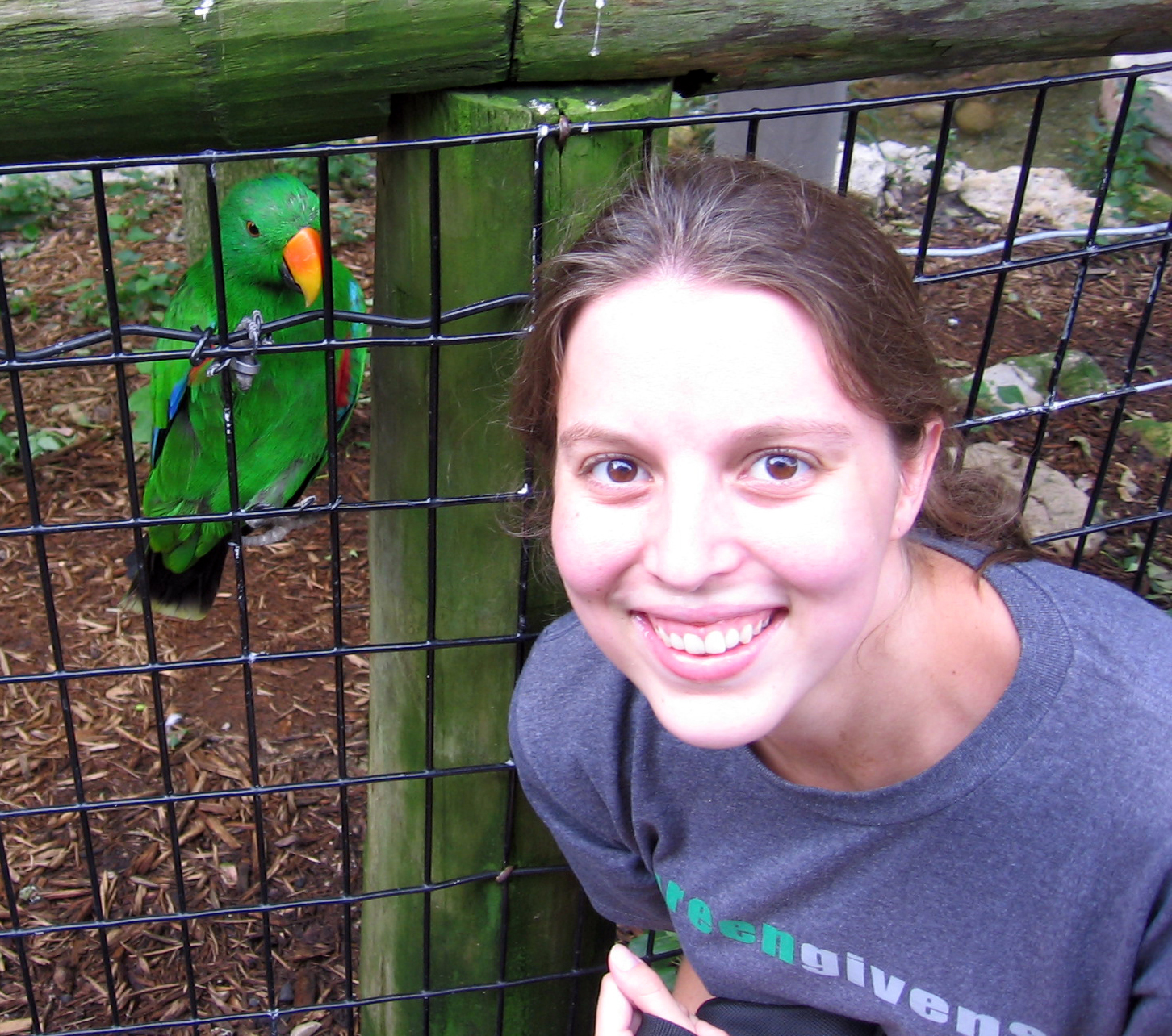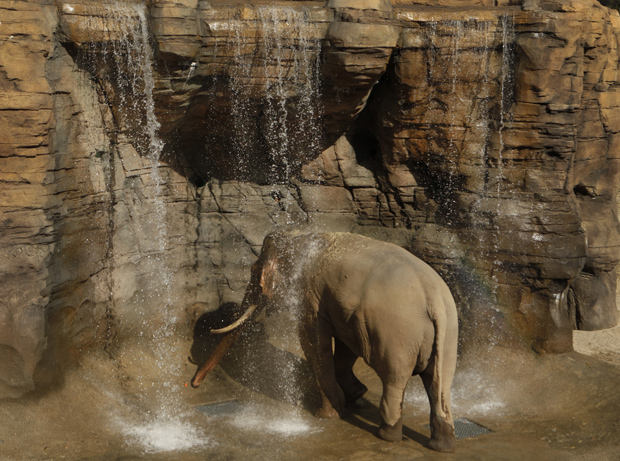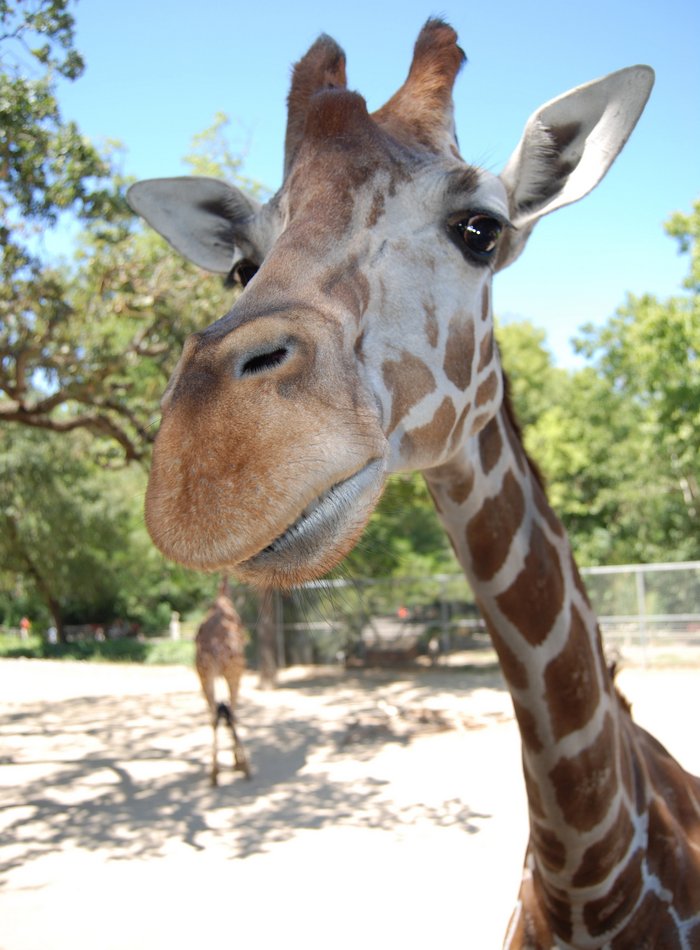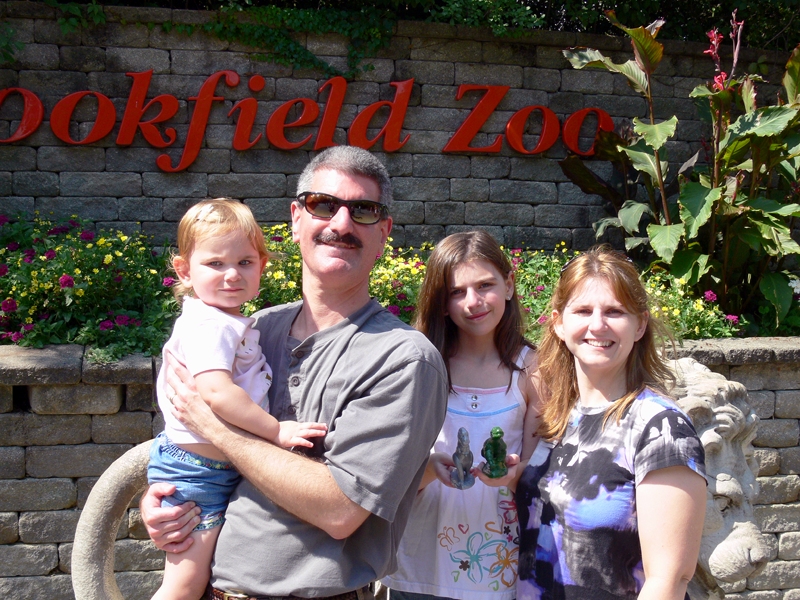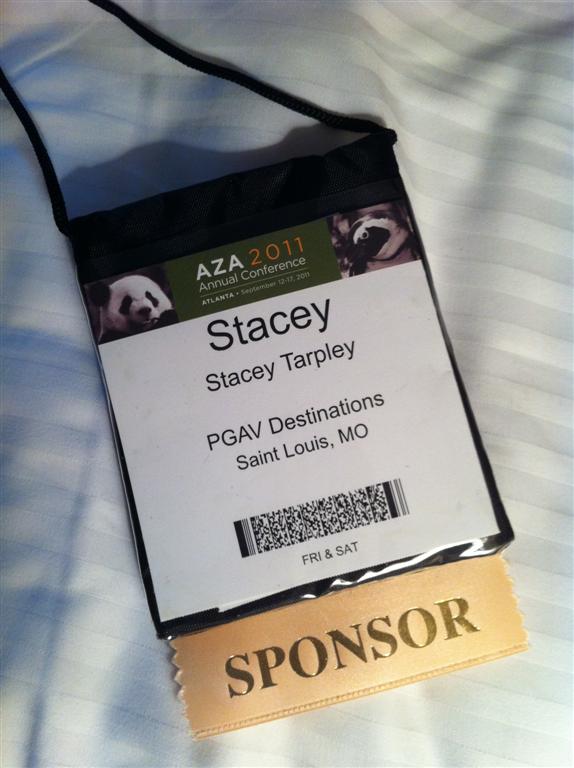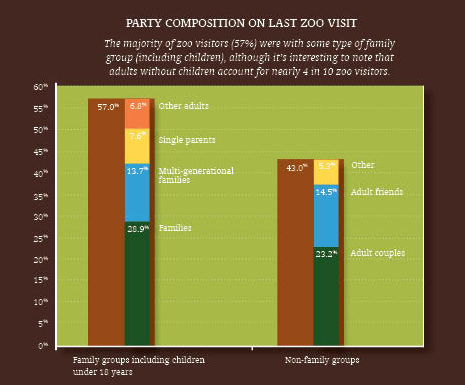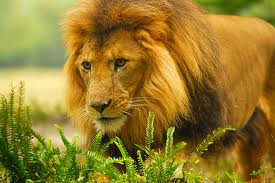Every so often, a new idea has so much traction its all anyone can talk about. The new idea at AZA this year? Integration of mobile technology into the guest experience. Big words. Simple ideas.
8:30 a.m. Saturday. Many people have left the conference by now. Others are simply too tired from a long week (or a long Friday night out) to even imagine dragging themselves out of their comfortable Omni Hotel bed into the chilly gray Atlanta morning to listen to non-industry experts talk about Macro Trends. But not me. I'm there in room A305 along with a smattering of other over-achieving, artificially awake zoo and aquarium professionals.

Our reward this morning? The Vice President of Marketing Strategy and Insights at Coca-Cola, Stan Sthanunathan, and Heather Baldino, the Senior Vice President of Network Marketing and Operations for Turner Broadcasting System. Big wigs. Real, world-class big wigs. For us zoo folks, practically marketing gods.
This session was named Macro Trends in the Zoo and Aquarium Industry. Not technology trends or social media marketing. Trends. But what did both of these big wigs have to tell us? Get connected to your audience. And not in the touchy-feely sorta way. In the digital way. And its got to be a two-way street.
Stan talked about the importance of this as a means to respond to the changing market. Today's biggest changes? Shifting demographics (the world is getting older), shifting economic center (its China and India, not the great West), sustainability as a core value (especially with limited resources of water and petroleum), the emerging middle class (expect an additional 800 million by 2020), the connected world (think "world news in a matter of minutes, if not seconds"), and a focus on well-being (the US is fat).
As the world changes, zoos and aquariums must adapt and evolve in our relationships with our market. Baldino pointed out that on-demand entertainment (like Netflix, YouTube, Roku, XBox 360, iPhone, iPad, etc) has skyrocketed in the last two years alone causing a steep decline in non-electronic sources of entertainment. People who like media, use media. All kinds and all the time. People are "watching CNN at home on the couch with their smartphone, pulling stats from the CNN website, investigating things they see on TV." The younger generation are even more dependent on media, and much more adept at digital multi-tasking.
So, how do we increase our share of the entertainment time budget of our audience? How do we expand the experience to before and after their visit to our parks? Digital media, and more specifically: mobile media.
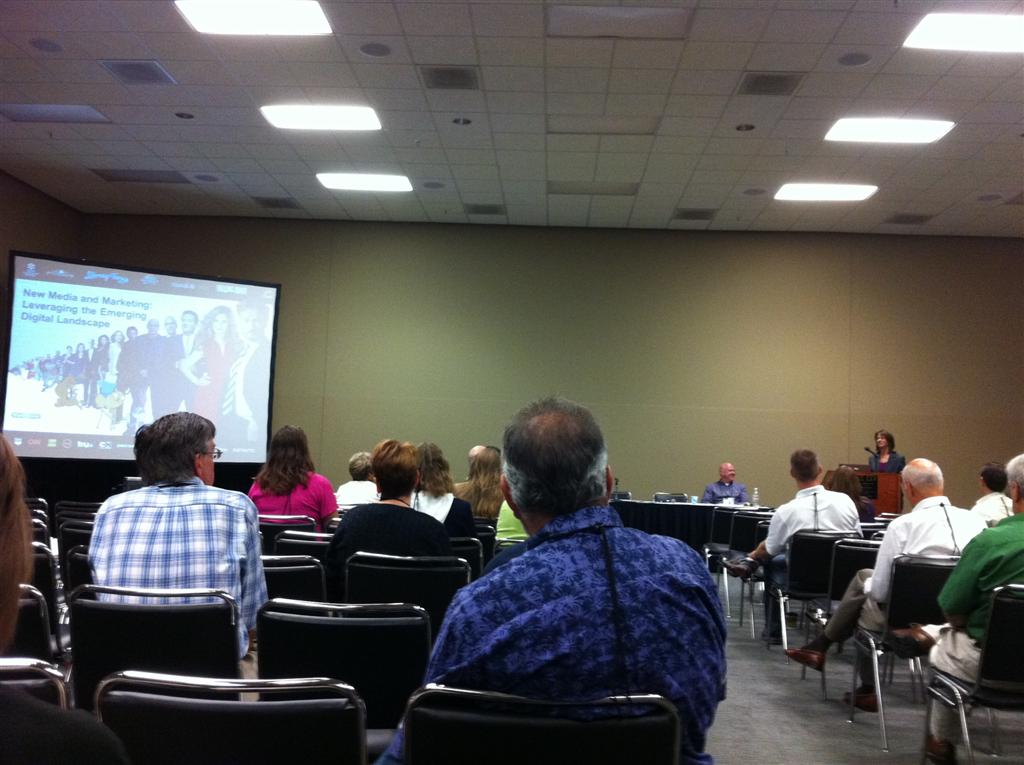
Depending on the source, between 28-38% of the US population carries a smartphone. Smartphone users access the internet (or some internet based app) at least four times a day, according to Baldino. More than half of the US population accessed Facebook in June 2011. These users are not just kids. In fact, the majority of these users are between the ages of 25 and 54. What does that mean for zoos and aquariums who tend to focus on content for kids? It means an opportunity for developing a social experience within the family.
According to Baldino, most of the users of the Cartoon Network's website and Facebook pages are adults on behalf of their kids. They don't access the pages FOR the kids, they access the pages WITH the kids. These experiences can enhance the zoo visit by "amplifying and extending the experience."
Of course, it also presents an opportunity to reach out to our heretofore untapped resource of "adults with no kids" market, which as shown in our PGAV Zoo-Goer study, is interested and does exist.
But how do we do that?
On Friday afternoon, a large, happy group of conference attendees met to address exactly that question. Currently, QR code integration and direct texting are the hottest methodologies in use at zoos and aquariums. But, Mobile Excursions, LLC CEO, Dan Shropshire, recommends utilizing hybrid apps for smartphones. Only 20% of the top 80 attractions by attendance are using apps at all, and he thinks its mostly due to price. Hybrid apps are useful to zoos and aquariums with limited budgets as they utilize web content already created thereby bypassing the resource intense content creation phase.
 Craig Leonardi, Lead Product Manager Industry Solutions at AT&T, points out that if you want to delve into smartphone apps and mobile web, you must have easy navigation, big buttons, an editor's eye to content, and ensure proper formatting. If you don't deliver these things, your guest may use the app once and never return to it. That obviously won't help us achieve our goals!
Craig Leonardi, Lead Product Manager Industry Solutions at AT&T, points out that if you want to delve into smartphone apps and mobile web, you must have easy navigation, big buttons, an editor's eye to content, and ensure proper formatting. If you don't deliver these things, your guest may use the app once and never return to it. That obviously won't help us achieve our goals!
Leonardi goes on to suggest the use of QR codes. If you've been asleep for the last year or so, QR codes are the funky black and white squares you see on almost every print ad out there. You'll see them on products and packaging, too. I've seen them on Pepsi cups at the Milwaukee County Zoo. As a consumer, you simply download a QR reader app onto your smartphone, then scan the code with your phone's camera, and you are instantly connected to some specific web content related to that particular brand or attraction. The Pepsi cup took me to a web-only commercial parodying and besting Coca-cola's famous polar bear ads.
The nice thing about QR codes is that any zoo can utilize them with minimal cost as free QR code generators are accessible and easy to use online. All you need is a computer, a printer, and a video uploaded to YouTube.
That's exactly what Santa Barbara Zoo is doing right now. Using a QR code generator called Kaywa, the Zoo is able to easily create expanded content for its guests. And they've even utilized a fan video, which has gone mildly viral. And I'll admit, I'm slightly obsessed with it.
[youtube http://www.youtube.com/watch?v=Fgt49R9d-XM]
If you're going to use QR codes, Leonardi suggests taking advantage of your guests' downtime. Meaning, any time they are standing in line, sitting down, or otherwise not actively engaged in an activity, make these opportunities available. Dean Noble from the Santa Barbara Zoo went so far to suggest using them at exhibits that are known to be snoozers. If you're animals aren't all that active, offer a code linking to a cool enrichment or training video. It won't replace the live animal interaction, but it'll offer another aspect of the animal that the guest is not currently getting to enjoy.
As for texting, Monterey Bay Aquarium is utilizing a simple scheme to help visitors see cool things throughout their visit. Everyone loves watching the critters get fed. So, through a voluntary program where guests opt-in to direct texting for one day, the Aquarium, via text message, suggests guests make their way to certain exhibits minutes before an unscheduled feeding is to occur. The Aquarium can use this system to selectively send guests to one exhibit or another based on attendance and crowding that day, ultimately helping to distribute guests throughout the Aquarium more efficiently.
With all these cool things zoos and aquariums are doing now, we have to understand that currently, today, right now, usage of these apps, QR codes, and direct texting is very low. According to both Shropshire and Mike Chamberlain at Monterey Bay, usage hovers between 1.5-2% of attendance. However, as trust of these new technologies increase over time, usage should also increase.
In order to succeed in integrating these technologies into the guest experience, Baldino suggests that the digital reward must be interactive and short. According to her, smartphone users are looking for quick info, tidbits, immediate gratification. She calls it "snacking." If the content is too long, you'll lose the audience's attention. She went on to say interactivity is absolutely key to digital content especially for kids. Things like polls and voting, the ability to collect electronic prizes, like badges or digital animals, and share their collection with friends, photo tagging, games and live chats enable the audience to get involved, to interact, to connect.

"Digital is here to stay," said Baldino. It should serve to amplify your product, not be the core experience. It should engage and connect customers. Many times, especially the older generations, feel digital experiences are alienating and isolating, which is the polar opposite of what we are trying to achieve in the zoo and aquarium world. But according to Baldino and Stan, digital is actually community-building. People tell each other about videos and apps, they send each other links, and talk to each other online. "Its the new water cooler," said Baldino. "If you're going to take advantage of Facebook, do it now."






